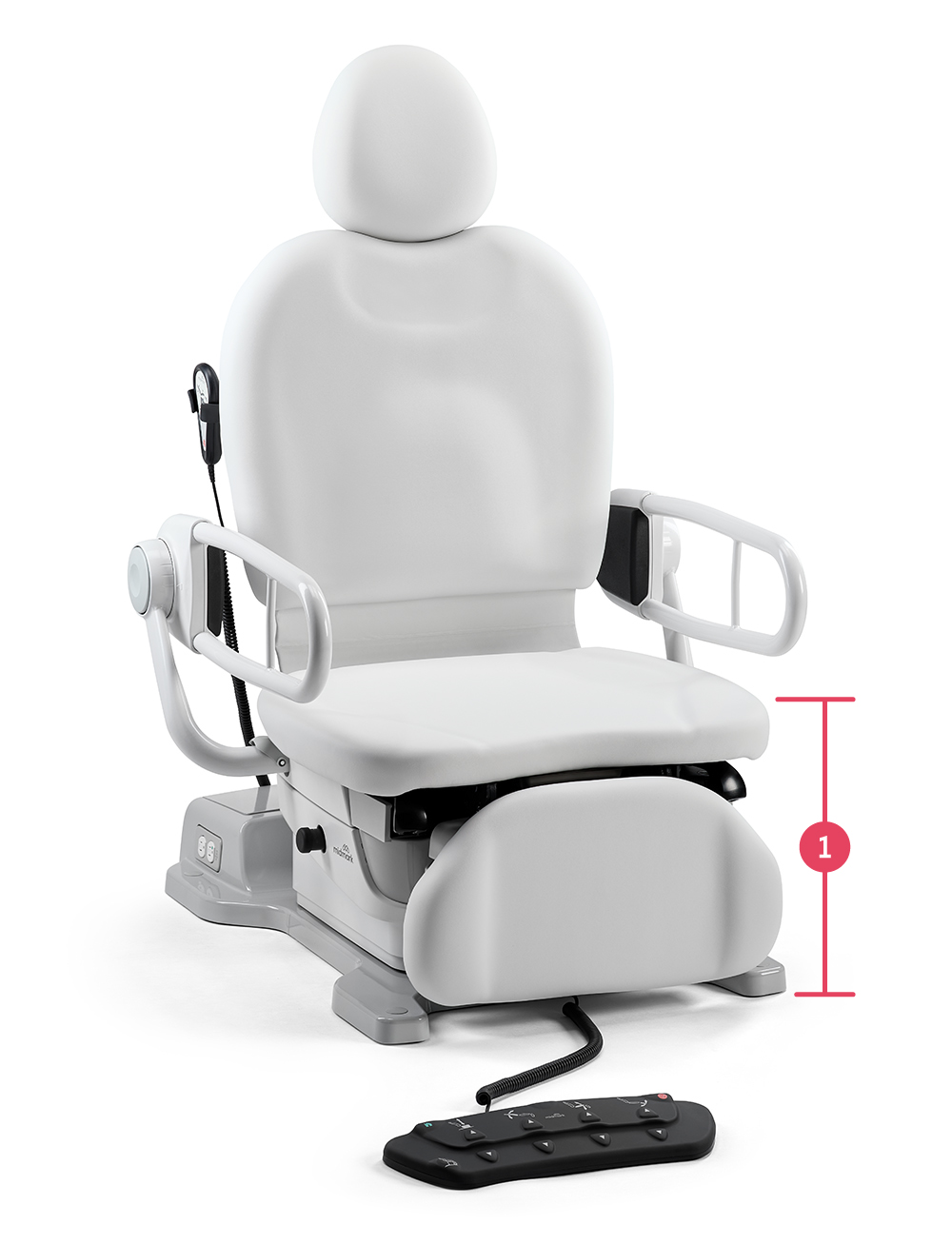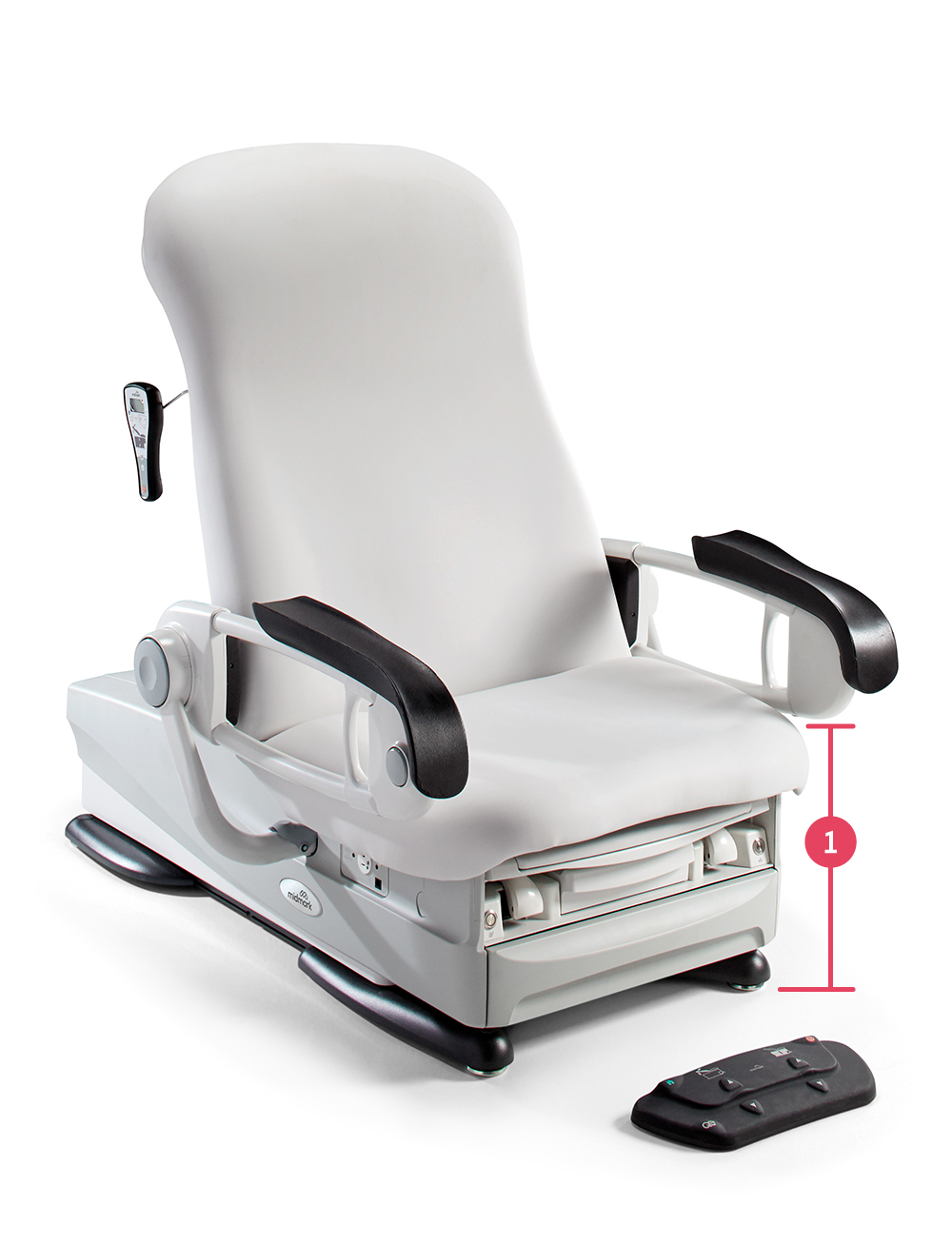US Access Board Requirements
The seated transfer surface shall be:
- 21 inches wide minimum
- 17 inches deep minimum
The ADA set the legal requirement. The US Access Board defined the standard. We're bringing it to you. Midmark is the first and only manufacturer in the market to have both a procedure and examination chair that complies with the US Access Board Standard.
Familiarize yourself with the standards and see what they could mean for your facility.

Transfer surfaces shall be adjustable in height measured from the floor to the top of the uncompressed transfer surface and shall provide the following:

The first and only procedure chair in the market that can lower to a seat height of 17"
39" high seat height
22" of height adjustability

The first and only exam chair in the market that can lower to a seat height of 15 ½"
37" high seat height
21 ½" of height adjustability
The seated transfer surface shall be:
The width of the base permitted within this clearance shall be 26 inches wide maximum at the edge of the examination surface.
Transfer supports shall be/have:
Compliant to the standard, Midmark Patient Support Rails and Patient Support Rails+ assist patients in accessing the procedure and exam chair, and provide a stable gripping surface while repositioning on the chair.
Compliant to the standard. Midmark Articulating Knee Crutches support the patients thigh, knee and calf during lower body exams and procedures
Beginning July 8, 2024, the Department of Health and Human Services (HHS) began enforcing new accessibility standards across healthcare settings that receive federal financial assistance. Shortly after, on October 8, 2024, the Department of Justice (DOJ) issued a final ruling stating that the Access Board Standards for Medical Diagnostic Equipment will be enforced, requiring state and local government entities to comply. These rulings ensure that medical diagnostic equipment nationwide meets consistent design and usability requirements to better serve people with disabilities. See what these enforcement changes mean for your facility below.
Want to dive deeper into accessible design? Explore these resources for expert insights, standards and practical tips to make your spaces more inclusive.
Take a moment to watch this brief video and share it with your colleagues to help raise awareness.
WATCH VIDEO
Watch this video for a quick overview of the design principles that can help you improve patient care and meet ADA requirements.
WATCH VIDEO
Learn more about the new Access Board Standard (MDE) and what makes the Midmark 626 and 631 compliant.
DOWNLOAD PDF
Explore ways to optimize your care environments for greater efficiency and improved patient experiences.
VISIT PAGE
Accessibility is required by the ADA, but state and Federal regulations can be complicated and cause confusion for health systems.
LEARN MORE
Invest in accessible, ADA-compliant equipment to see savings—calculate your IRC 44/179 tax credit and explore inclusive, efficient care solutions.
LEARN MORE
Curious about our products and services or have a general inquiry? Do you have questions about what these rulings mean for your facility? We’re here to answer your questions and provide assistance.
Complete the form below or call 1.800.MIDMARK to get started.